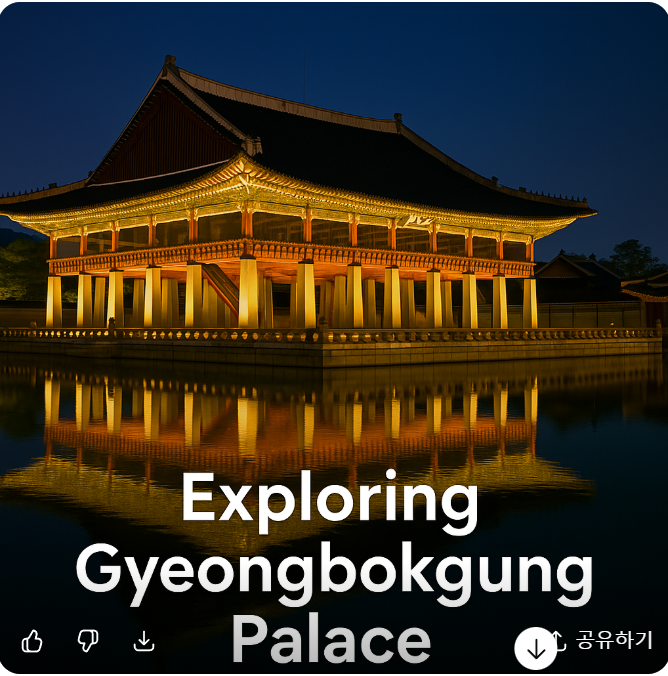A detailed historical and cultural guide to Gyeongbokgung and Korea’s other four royal palaces
※ This article is based on official information as of August 12, 2025.
Summary at a Glance
Discover the grandeur of Korea’s royal heritage through Gyeongbokgung and the Five Grand Palaces, blending centuries of history, architecture, and cultural traditions that still thrive in modern Seoul.
Gyeongbokgung Palace, standing at the heart of Seoul, is the largest and most historically significant of Korea’s Five Grand Palaces built during the Joseon Dynasty (1392–1897). Alongside Changdeokgung, Changgyeonggung, Deoksugung, and Gyeonghuigung, these palaces reflect the political authority, Confucian values, and architectural sophistication of Korea’s royal court. Each palace tells a different chapter of Korea’s story—some marked by prosperity and cultural flourishing, others by war and reconstruction.
Historical Origins and Legacy
Gyeongbokgung was commissioned in 1395, only three years after the founding of Joseon. The name means “Palace Greatly Blessed by Heaven,” symbolizing the dynasty’s aspirations for stability and prosperity. It served as the main royal residence, administrative headquarters, and ceremonial stage for state affairs.
However, its history is also one of resilience. The palace was razed during the Japanese invasions of 1592–1598, left in ruins for centuries, and reconstructed in the late 19th century under King Gojong. Today, much of its original layout has been restored, though restoration continues.
Changdeokgung, a UNESCO World Heritage Site, is celebrated for harmonizing with its natural surroundings, embodying pungsu-jiri (Korean geomancy). Changgyeonggung was built as a residence for queens and concubines, while Deoksugung became the symbol of Korea’s brief transition into a modern monarchy. Gyeonghuigung, though smaller, played a crucial role as a secondary royal palace.
Visiting in 2025 – Admission & Cultural Etiquette
Visitors can enjoy free entry on the last Wednesday of each month (Culture Day), while standard admission for Gyeongbokgung is affordable and often waived for those wearing hanbok, the traditional Korean dress. The palaces open year-round but may have seasonal festivals—spring cherry blossoms, summer night tours, autumn foliage walks, and winter illumination events.
Tourists should remember that these are national heritage sites. While photography is allowed, drone use and commercial filming require prior approval. Speaking in moderate tones and staying on designated paths preserves the atmosphere and protects the structures.
Step-by-Step Guide for a First-Time Visit
- Start at Gwanghwamun Gate – The grand main gate opens into Heungnyemun Gate, where the changing of the royal guard ceremony takes place.
- Proceed to Geunjeongjeon Hall – This was the throne hall where kings met officials and received foreign envoys.
- Explore the Inner Court – Visit Gyeonghoeru Pavilion, the picturesque banquet hall on stilts over a lotus pond.
- Stroll to the National Palace Museum & Folk Museum – Located within the palace grounds, these museums deepen understanding of Joseon culture.
- Extend Your Tour – Purchase the integrated palace ticket to visit all five palaces over three months, allowing a richer historical immersion.
Real-Life Example – A Day in Hanbok
A traveler from France, dressed in hanbok rented from a nearby shop, attended the morning guard ceremony, toured Gyeongbokgung’s pavilions, then crossed to Bukchon Hanok Village for tea. Locals greeted her warmly, and several passersby asked for photos—a genuine example of cultural connection in Seoul.
Regional and Seasonal Nuances
While the Five Grand Palaces are concentrated in Seoul, each reveals distinct seasonal beauty. Changdeokgung’s Secret Garden in autumn is unmatched, while Deoksugung’s stone wall road in winter feels cinematic. Evening tours, when offered, are highly recommended for romantic night photography.
Frequently Asked Questions
Q1. Can I visit all five palaces in one day?
Technically yes, but it is not recommended; each deserves at least an hour or two for full appreciation.
Q2. Is Gyeongbokgung wheelchair accessible?
Yes, with designated ramps and pathways, though some historic areas have uneven stone floors.
Q3. Can I witness the changing of the guard year-round?
Yes, except during extreme weather or national events. The schedule is usually twice a day.
Official Links for Visitors
Gyeongbokgung and the other royal palaces are not just relics of the past—they are living symbols of Korean identity. Whether you walk under the crimson eaves in spring sunshine or watch lanterns flicker against the winter snow, each visit connects you to centuries of stories. May your journey through these halls be as majestic as the kings who once ruled here.
